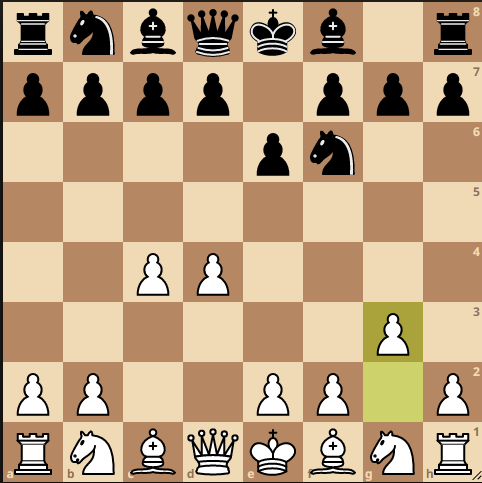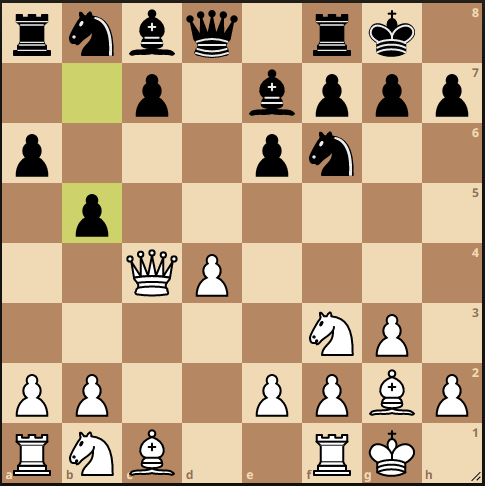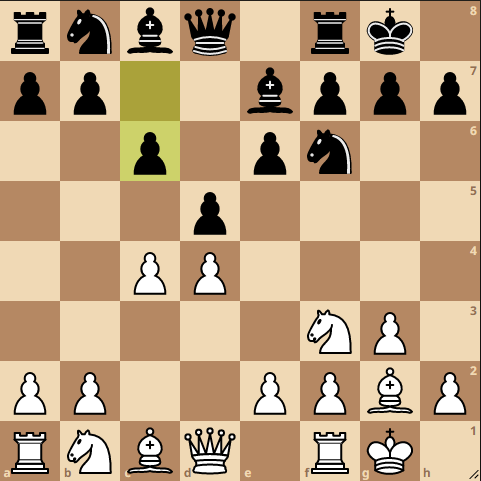Learn Chess. Learn Life Lessons.
Come, join us and transform your kid’s life through chess.
Join Online Coaching Join In-Person Coaching
The Catalan Opening is an aggressive opening that begins with White’s d4 and involves the fianchetto of White’s light square Bishop. This flexible opening is played at international tournaments and in clubs by amateur players.
The Catalan Opening is a chess opening where White plays d4 followed by c4 and then fianchettoes, the White bishop on the g2 square. The opening usually follows the following sequence:

The Catalan Opening derived its name from Catalonia, an autonomous community in Spain. The tournament organizers at the 1929 Barcelona tournament asked Savielly Tartakower, a Polish Grandmaster, to create a new variation as a tribute to the area’s chess history. The opening was played frequently by leading players of the 1930s and 1940s, such as world champions Jose Raul Capablanca, Alexander Alekhine and Mikhail Botvinnik, as well as top grandmasters such as Salo Flohr, Paul Keres and Samuel Reshevsky.
The Catalan came to prominence at the top level when both Garry Kasparov and Viktor Korchnoi played it in their Candidates Semifinal match in London in 1983. Here, five games of the eleven-game match featured the Catalan. In 2004, Ruben Felgaer won a tournament celebrating the 75th anniversary of Barcelona 1929 and the birth of the Catalan Opening. Every game at the tournament, which was also held in Barcelona, began with the Catalan Opening.
The opening sees White adopt a combination between the Queen’s Gambit and the Reti Opening. Now, the idea behind d4 and c4 is to gain space and control over the centre, followed by g3 to allow the White squared Bishop to come to the g2 square. Even though bringing the Bishop to g2 is to eventually pose an attack on Black’s Queenside and to protect White’s Kingside, this may leave the White pawn on c4 in a weak position as the game progresses. This may lead to White having to even sacrifice the c4 pawn.
The Catalan typically starts with what is known as the Queen’s Gambit.
However, you have other intentions.
You want to control the board and bring pressure on Black’s queen-side while keeping your king tucked safely in the corner. And once your light-squared bishop is fianchettoed, you put pressure on the diagonal line that runs from your rook (h1) to Black’s queen-side rook (a8). An early castle keeps your king safe, and you can now expand on the opening to further take control of the board, set the tempo of the game, and slowly chip away at your opponent.
The Catalan is considered a strategic opening that relies more on controlling the board and position of pieces than on the use of tactics. Even though it is an easy opening to learn, players who don’t have a firm grasp of tactics will struggle against a player who can use tactics to offset the advantages of this opening. If you want to play a quick-strike game, don’t choose this opening. Instead, the Catalan is designed for patient players looking for an advantageous opening that can be played as a closed game or an open one depending on how Black responds.
Black can respond to the Catalan Opening in two main lines –
Here Black decides to play d5 followed by dxc4 to open up the center for further development. Black can either choose to hold the pawn on c4 by playing b5 or give it back to gain tempo.
Here Black chooses not to capture the c4 pawn and instead pushes White into a cramped position.
Black may also choose to transpose into a completely different line in order to avoid the Catalan Opening entirely.
As mentioned above – here, Black decides to capture White’s c4 pawn.
White decided to sacrifice the c4 pawn to develop the remaining minor pieces. Further, White’s initial idea to use the Bishop on g2 to pose a threat on Black’s Queenside now seems to work out due to the absence of the Black pawn on d5. White and Black then follow this with Castling on the Kingside, and White now can either play – Qc2 or Ne5 on the 7th move. Ne5 allows White to open the Bishop on the g2 square, and Nc6 is the best response for Black against Ne5.
If White Plays Qc2 on the 7th Move Instead of Ne5-
White decided to sacrifice the c4 pawn to develop the remaining minor pieces. Further, White’s initial idea to use the Bishop on g2 to pose a threat on Black’s Queenside now seems to work out due to the absence of the Black pawn on d5. White and Black then follow this with Castling on the Kingside, and White now can either play – Qc2 or Ne5 on the 7th move. Ne5 allows White to open the Bishop on the g2 square, and Nc6 is the best response for Black against Ne5.

Black is now left with a backward ‘c’ pawn which White can take advantage of if Black decides to play c5 at some point in the game.

Both players have now finished their kingside development, and Black adopts a “triangle” setup with their central pawns. White now has the opportunity to defend the c4 pawn with Qc2 with the possibility of being able to play e4 to break the center in the coming few moves. Post e4, it would be a little tricky for Black to take over the center, and White will have more control over it. Hence Black can continue with the development of the other Bishop.
The Closed Catalan also provides Black with the opportunity to play Bb4+ instead of Be7 on the 4th move. The idea is to force the White Bishop to come to the d2 square – Bd2, to defend the King from the check to force the dark-squared Bishop to come to a square that won’t be great for its development or control.
One disadvantage of this opening is it requires a strong knowledge of both strategy and tactics. So play it against weaker opponents but avoid it against stronger ones, not because the opening is bad, but a stronger player will have a better understanding of the complexity of the middle game.
Also, this opening will require that a player be willing to exchange major pieces before the endgame. If you are not comfortable exchanging queens early in a game, this opening might not be for you.
Finally, if you want to devastate your opponent with a king-side attack, the Catalan won’t work well. Your bishop on g2 is pointing in the wrong direction for that.
Almost every famous modern-day player has the Catalan Opening in their repertoire. The most notable experts are Vladimir Kramnik, Ding Liren, Anish Giri, Boris Gelfand, and Daniil Dubov. The Catalan has had proponents at the highest level in chess, with Vladimir Kramnik, Viswanathan Anand and Magnus Carlsen all employing the opening in their respective World Chess Championship title games. Magnus Carlsen made the Catalan his main weapon for the World Championship match against Ian Nepomniachtchi. Later he also successfully used it in the Tata Steel Championship 2022.
Catalan statistics can be viewed globally (number of wins, draws, or losses) or on the results of individual moves.
A Chess Tempo analysis of 11,357 shows that white wins 35.85% of the time. Another 36% of the time, the game is a draw, and the opponent wins only 28% of the games. So you have a 70% chance of either winning or playing to a draw.
An analysis of the fifth move by 365chess reveals that moving the pawn to e3 leads to white losing over 50% of the games.
Why Play the Catalan Opening?
The idea is to build positional pressure on Black as the game progresses and the use of the fianchettoed Bishop to do the same. This is a great sequence of moves for players who want their middle game to be aggressive and have the choice of going in for a closed game or an open game.
Is the Catalan Opening Good for White?
Black does seem to be at a slight disadvantage positionally in some variations of this opening which can be converted into a significant advantage for White. Hence, this would be a great Opening for White to choose to play.
Why Doesn’t the Computer Recognize the Catalan Opening?
A computer doesn’t always recognize that your opening is a Catalan because some engines only recognize the first moves. Other names might be a Queen’s Gambit, a Reti Opening, or a Queen’s Pawn Opening. The program might also label the move a book move. This simply means the opening is conventional and well-known. Openings were once listed only in chess books, hence the name.
What Is the Neo-Catalan?
The Neo-Catalan variation builds the same structure on White’s Kingside, with bishop in g2, knight in f3, and king castle. However, instead of playing c3 and c4 pawns, move the knight’s pawn to b3. It is often a response to Black responding with the king’s pawn to e6.
Learn Chess. Learn Life Lessons.
Help your child improve their Strategic Thinking, Critical Thinking, Time Management, etc. through the game of Chess.

This article is technically edited and reviewed by Grand Master Marian Petrov.

CHESS KLUB offers chess classes for kids and adults of all levels. Our coaches include FIDE, National, International and Grand Masters among many.
We offer Online and Classroom coaching.
CHESS KLUB has coaching centers in the US and India now!
Do you want to see your kid excel in Chess?
Learn Chess. Learn Life Lessons.
